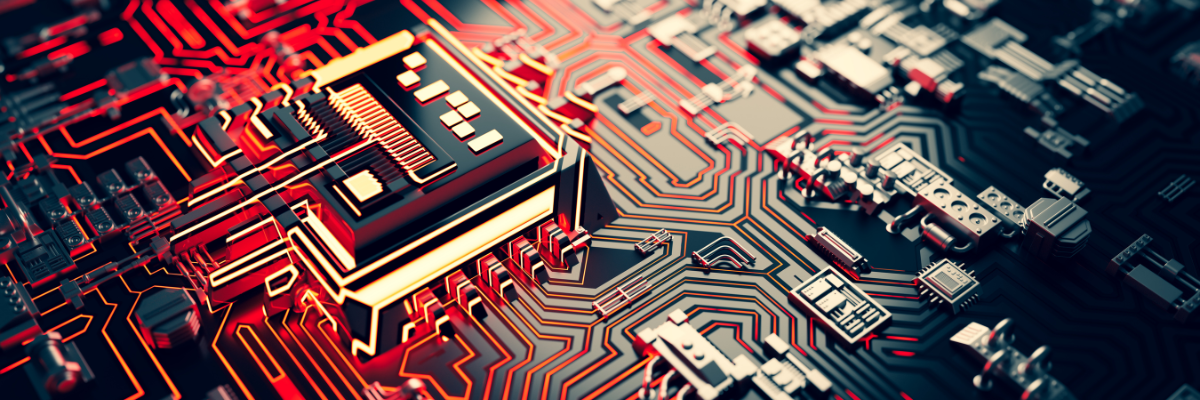6 Must-Know Points for Multilayer PCB Designs

6 Must-Know Points for Multilayer PCB Designs
Most electrical and electromechanical devices' shelf life and functionality largely depend on printed circuit boards (PCBs). Although PCBs have been used for decades, most used in old, conventional devices are single or double layered, with drawbacks such as capacitance and noise. To overcome these challenges and fulfill the increasing demand to suffice the functionalities of today’s complex yet miniature devices, PCBs have shrunk in size and are layered to fit and the required dimensions and shape. Modern microelectronics has increased the use of multilayer PCBs. Multilayer PCBs are the backbone of modern electronics owing to their improved signal integrity, efficient thermal management, high density, low weight, and more. Before capitalizing on the benefits these PCBs offer, understanding their design guidelines is of utmost importance. This is because even a small design flaw can impact the performance and productivity of the circuit boards. This post highlights the multilayer circuit board manufacturing practices and standards. So, stay tuned.
Factors Impacting the Selection of Multilayer PCB Designs
It is important to consider standard guidelines and comply with the required industry standards. These guidelines act as a checklist for creating multilayered boards without any design and manufacturing defects.
-
Layer Stack-Up: This is the first and the most fundamental consideration in the multilayer PCB design. It defines the copper layer arrangement and insulating materials. There are several factors to consider for stacking different layers, including the number of layers, signal integrity, layer symmetry, power and ground planes.
-
Thermal Management: This is crucial, especially in applications where components generate significant heat. These PCBs comprise dense arrangements of components and traces, leading to heating issues. If not appropriately addressed, it can result in severe failure and reduce the component's lifespan. Engineers use different thermal management techniques to mitigate these issues, such as thermal vias, incorporating dedicated copper layers, heat sinks, precise positioning of heat-producing components, and more.
-
Signal Integrity and EMI: Due to the complex layering structure, multilayer PCBs are susceptible to signal integrity and electromagnetic interference (EMI). Signal integrity is defined as the ability of the signal to retain its integrity and propagation quality as it traverses the circuit board. It is challenging to maintain signal integrity due to the potential for cross-talk, reflections, and signal degradation between tightly packed traces. Impedance matching and controlled-length routing are widely preferred to minimize these issues. EMI occurs due to the electromagnetic fields generated within multilayer PCBs, leading to compliance or performance issues. This can be addressed by incorporating proper shielding, solid grounding strategies, placement of decoupling capacitors, and more.
-
Component Placement and Routing: The placement and routing of the component hold immense significance in a multilayer PCB design. This is because they influence the board's overall performance, reliability, and manufacturability. Strategic component placement involves arranging electronic components to minimize signal interference and optimize space usage. Efficient routing entails the creation of well-established pathways for signal traces, ground connections, and power distribution.
-
Manufacturability: Manufacturability of circuit boards determines the efficiency and quality of the final product. It is important for design engineers to consider factors such as trace routing complexity, component placement, and the overall layout to ensure circuit board design with the required manufacturing process capabilities. Design for Assembly (DFA) and Design for Test (DFT) are popular approaches to ensure these aspects. DFA reduces the need for complex and costly processes by considering component placement and soldering. On the other hand, DFT includes test features and points for effective circuit board testing and debugging.
-
Environmental Conditions: The production of circuit boards involves the use of chemicals, materials, and energy resources, which can have an impact on the environment. Thus, designers should consider environment-friendly materials and minimize the use of hazardous substances like specific flame retardants, lead, and so on. In addition to this, the boards need to match the operating conditions, temperature ranges, and environmental exposures.
Designing multilayer PCBs requires in-depth knowledge of these aspects encompassing everything from layer stack-up to signal integrity to thermal management. They can impact the circuit board's functionality, manufacturability, and reliability. By addressing these pointers, designers can create high-quality, performance-driven multilayer circuit boards that fulfill the demand for advanced electronic devices. If you require multilayer PCBs for your electronics applications, you must consult an industry leader in this segment. Twisted Traces specializes in designing and manufacturing multilayer PCBs. The company also offers a high level of customization to meet the specific needs of applications. If you need any further information, you can contact their team of experts today.

